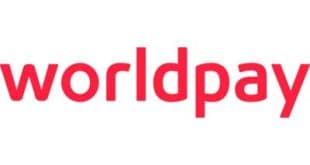John Stewart and Jim Daly
The Fed’s Durbin-inspired debit regulation is already radically reshaping the business for merchants, issuers, acquirers, and networks. Here’s how.
Well, it’s all over but the shouting. And, with the ink dry now for more than two months, there isn’t even much shouting going on. Now, payments-industry players must figure out how they’ll live with the Federal Reserve Board’s final regulation capping debit card interchange and rewriting long-entrenched rules governing the routing of debit transactions.
Nobody is entirely happy with the Fed’s handiwork. Banks and card networks are resigned to it, having lost an epic lobbying battle last year with retailers, a crushing defeat that paved the way for first-ever federal pricing regulation in the card business.
Nor are merchants enthusiastic, having seen the Fed raise the debit card interchange cap on big issuers from an originally proposed 7-to-12 cents to a final, done-deal 21 cents, plus a few extras like 0.05% for fraud-loss recovery and maybe another penny for fraud-fighting costs. On a typical $38 debit card transaction, this will yield big banks a maximum of 24 cents, a 45% haircut from the current 44-cent average.
For Big Retail, this is going in the wrong direction. Even 7 cents was too high for some of them. “We were shocked,” says an executive with a big-box retail chain. “We would have argued that 7-to-12 cents was at the high end.”
‘Unease’ with Intervention
Even the regulator is in a bind. The Fed, stuck with this tar baby ever since President Obama signed the Dodd-Frank Act into law 14 months ago, has had to slog through more than 11,000 comments, as well as industry surveys and expert opinions, to do the duty assigned to it by the so-called Durbin Amendment. That was a statute bolted onto Dodd-Frank in the closing weeks of debate over that bill by Sen. Richard Durbin, D-Ill.
In June, when they promulgated their final rule, Fed officials said they did their best with the hand the Durbin Amendment gave them. “I want to underscore my colleagues’ unease with this kind of regulatory intervention,” said Fed governor Sarah Bloom Raskin, Maryland’s former commissioner of financial regulation.
Even now, with its final rule in place, the Fed isn’t done. Next month, just as its pricing caps take effect, it must start plowing through the comments it has asked for on the 1-cent fraud-prevention adjustment. Excuse Fed staffers if they appear a little bleary-eyed after all this arcana.
Yet pricing regulation is only part of the drama, and it applies only to banks that exceed $10 billion in assets. With Act Two, the Fed gets the entire cast on stage. In a rule that takes effect Oct. 1 for networks and April 1 for banks, issuers regardless of asset size must show at least two unaffiliated networks on their debit cards. No more Visa for signature debit and Interlink (a Visa-owned network) for PIN debit. The idea is to give merchants a chance at network choice and least-cost routing.
To some observers, this part of the Fed’s regulation is even more momentous than the interchange ceilings. “That was just huge,” says Eric Grover, principal with payments consultancy Intrepid Ventures, Minden, Nev.
Had the Fed gone with another option in its original proposal, which it floated back in December, it would have required issuers to show at least two unaffiliated PIN and two unaffiliated signature networks, opening up least-cost-routing possibilities even wider for merchants and, in the view of some, negating the pricing exemption for banks under $10 billion in assets. “The exemption would have been worthless,” says Grover.
Now, with the most revolutionary regulatory apparatus ever to hit the electronic payments business set to start rolling next month, seems an opportune moment to take stock of how the various parts of the business will be impacted—and are reacting so far.
‘Still Guarded’
We’ll start with the most ardent advocates, and putative beneficiaries, of the regulation, the merchants.
Estimates of how much retail companies will save range from $6 billion to $8 billion. But merchants are far from satisfied. The Fed’s upward revision in permitted interchange not only provoked wrath in the retailing community, it even generated calls that merchants should sue the Fed.
“All options are on the table, and that continues to be the case,” says Mallory Duncan, senior vice president and general counsel with the Washington, D.C.-based National Retail Federation. “While the debit rules are an improvement over the current morass, they’re not nearly in line with Congressional intent.”
In addition to preferring the Fed’s original, 7- to-12-cent proposed interchange caps, merchant groups also expressed strong preferences for the so-called Alternative B as the best option to implement the Durbin Amendment’s network-affiliation provisions. That alternative would have required more than one unaffiliated network for each method of authentication, for example, two for signature debit and two for PIN-debit.
For simplicity’s sake, however, the Fed chose Alternative A, which requires each debit card to have two unaffiliated networks regardless of authentication method. The vast majority of cards will likely have one signature option and one or two PIN-debit choices.
While Alternative A might be easier for processors and networks to implement, it reduces pricing choices available to merchants, according to the NRF. “They actually shortchanged competition by doing that,” says Duncan.
Meanwhile, major merchants are looking forward to another, potentially more lucrative battle over credit card interchange. A massive antitrust suit against the card networks and big banks awaits class certification in federal court in Brooklyn, and it could be a chance for retailers to get what they feel they didn’t get from the Fed. “We are optimistic we will have a more rational [pricing] structure in the future,” says the big-box retail executive, referring to the federal case.
When it comes to banks, the Fed rule neatly bifurcates the business along a $10 billion dividing line. Those under the line, though exempt, remain on edge. Banking and credit-union trade groups, not to mention hundreds of individual institutions, fretted in comments to the Fed about the amendment’s potential damage.
Their thinking is that even though Visa, MasterCard, and some EFT networks have committed to two-tier interchange schedules—one for regulated and one for exempt issuers—their interchange income nonetheless will fall.
Part of that will happen, they argue, in future years as market forces supposedly pressure the networks to narrow the artificial spreads between regulated and unregulated rates. The other, more tangible pressure on revenues will be felt sooner as merchants, especially big ones, take advantage of their greater choices in network and routing options to flow more transactions through lower-cost networks.
“We’re still guarded with what’s going to happen with merchants with control and what they’re going to try to get the consumer to do,” says Randy L. Beck, executive vice president of risk management for Royal Credit Union, an Eau Claire, Wis.-based institution with 130,000 members and about $1 billion in assets.
For small issuers, Durbin could mean big money made or lost. In comments to the Fed last winter, RCU, a Visa debit card issuer, said it would have lost $3 million, or 73%, of its interchange income had the Fed gone with the 12-cent cap and there was no two-tier interchange schedule. Interchange represented 75% of the credit union’s net income, RCU’s letter said.
Some small banks figure that, at 21 cents plus 0.05%, big-bank pricing is now close enough to exempt pricing that the gap won’t matter to most merchants. With the Fed’s originally proposed 12-cent cap, small issuers stood to lose out to regulated banks, says Bob Steen, chairman of Bridge Community Bank, Mechanicsville, Iowa.
“When the Fed moved [the cap] from a maximum of 12 cents to 21 cents, that was an absolute game-changer from a big-box retailer’s perspective,” he says. “At 12 cents, it was too much of a difference [for merchants] to tolerate. At 21 cents, they’re going to be pretty much indifferent to it.”
Prepaid Takes a Hit
Big banks, meanwhile, aren’t waiting for Oct. 1. No wonder. Pleasanton, Calif.-based Javelin Strategy & Research estimates large financial institutions stand to lose $6.6 billion in interchange income next year because of Durbin. That’s on top of the estimated $5.6 billion banks gave up because of overdraft regulation that took effect last year, the research firm says.
To replace that income, banks are pulling back on rewards, doing away with free checking, and slapping on account fees. Of the nation’s 10 biggest banks ranked by deposits, seven have been phasing out free checking or have eliminated it entirely, according to Javelin.
Few have introduced fees explicitly for using debit cards, but that could be changing. Wells Fargo & Co., which could see as much as $1 billion in debit income evaporate under the Fed cap, has sent word to customers in five states that next month it will start charging $3 each month they perform a point-of-sale debit transaction.
Wells and any issuers inclined to follow suit will have to be careful, though. Javelin found in consumer research last year that 60% of consumers would switch to another form of payment if confronted with any monthly debit card fee of any kind.
The big banks are also re-evaluating their prepaid card programs. One big surprise in the Fed’s final rule was a provision that regulated issuers’ general-purpose reloadable prepaid cards are subject to the fee cap if the cards aren’t the sole means of accessing the underlying funds. The Fed’s rationale for this new wrinkle was to keep banks from evading the debit card fee ceilings with prepaid card programs that look and act like demand-deposit accounts.
Since many issuers and program managers offer bill pay, checking, and other means of access to prepaid accounts (especially on payroll cards), this new rule could put the kibosh on big-bank prepaid programs and force third-party program managers to seek out partners among small banks.
Networks, meanwhile, are re-gearing their interchange tables. Visa and MasterCard have already announced they will use so-called dual interchange systems. EFT networks are also jumping on the new routing rule as an opportunity to displace Interlink among issuers that have ties to the Visa-Interlink combo.
“We have had discussions because there are issuers that need to do something [about an unaffiliated network] fairly quickly,” says Rick Jenkins, senior vice president and corporate counsel at the Shazam network, Johnston, Iowa. “We certainly recognize that as an opportunity.”
So does Visa, which isn’t sitting around waiting to see issuers jump ship. To stem defections, Visa in late July announced a new “network participation fee” that will be charged to acquirers and will apply to all transactions in the U.S., credit and debit. The move replaces current variable charges with a flat fee that the network said could reduce its clients’ expenses.
Merchants, though, are wary, noting that they will have to pump their debit transactions through Visa’s arteries to produce enough volume to enjoy the lower fee. “The network cost will go down only if you send them more transactions than you did last year,” says the big-box merchant executive.
MasterCard’s status is less clear. MasterCard owns the Maestro PIN-debit network and has some exclusive pacts with card issuers, but its upside at first glance is greater than Visa’s as issuers shop for unaffiliated networks. MasterCard rejected adding a Visa-style participation fee, saying it will court new debit issuer business on a case-by-case basis.
Biggest Loser
Acquirers, as the ones that technically pay interchange and pass on the cost to their merchants, are sensing opportunities with Durbin. Many are expected to pass on only part of the reduced debit costs to boost profit margins. They’ll get away with it, at least for a while, if they use bundled pricing plans that make it hard for smaller merchants to discern their actual interchange expenses.
Some acquirers and ISOs, however, use the so-called interchange-plus pricing model that explicitly breaks out processor charges from interchange. Such plans preclude margin padding, but that’s okay with Heartland Payment Systems Inc., the leading proponent of interchange-plus pricing.
In an effort to retain existing merchants and attract new ones, Princeton, N.J.-based Heartland next month will launch its “Durbin Dollars” campaign, spelling out to current merchants how much they’re saving every month in reduced debit interchange.
“We are the company that is going to send every single dollar that was mandated in the Durbin legislation to the place it was intended, to our merchants’ bank accounts,” Heartland chairman and chief executive Robert O. Carr told stock analysts in July.
The biggest loser in all this? Decoupled debit, a product in which the customer gets a debit card from an entity other than the bank that holds her checking account. Tempo Payments Inc., the main player in the niche, announced just two weeks after the Fed issued its rule that it was going out of business, saying the interchange price controls would make decoupled debit unprofitable.





